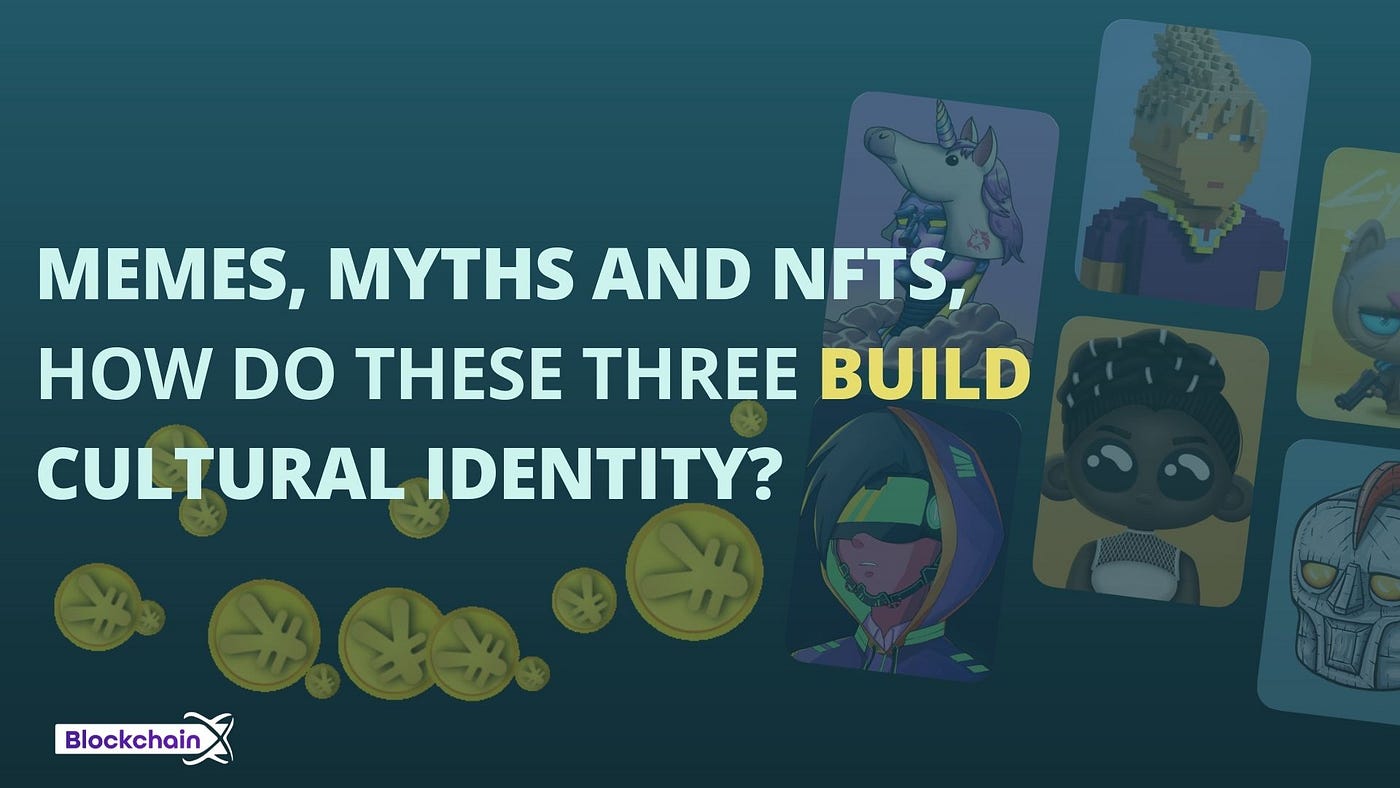Memes, myths and NFTs, how do these three build cultural identity?
Humans have always been good at telling stories, but it’s clear that we also value images very seriously. The earliest knowledge was passed down orally, and there are indications that visual storytelling was essential to people before the invention of written language.
We see this in petroglyphs from different places, times and cultures, some images on the stone even dating back 50,000 to 100,000 years, and they depict story after story and myth.
Over thousands of years, these stories have been codified and mythological stories have been passed down from generation to generation, helping to convey beliefs, traditions, myths, iconography and identity in the real world.
Even today, stories and myths from societies like ancient Greece exist in the way we understand the world.

Current Society, Memes and NFTs
So what does all this have to do with current society, memes, and NFTs?
We can take myths superficially — they are embellished accounts based on real events — and we can tell our kids as they grow up that these are just funny stories. But socially, myths have far-reaching implications.
In mythology, we see a reflection of ourselves — who we are and who we want to be. Myths also vividly tell us what we shouldn’t be. Wrapped in these stories and morals is a sense of society’s self, and as such, they are engraved in stone and passed down for millennia.
Most myths that will stand the test of time are easily distilled into primary images that are easily recognizable and shared, the best example being the image of the “Trojan horse” condensed by people thinking about the “Greek Trojan War”.
Trojan horse images and stories are easy to understand and draw analogies to contemporary culture, politics or society. This is a prime example of an unlikely meme.
Identity and PFP
The NFTs used in PFP represent a shift in visual storytelling while also emphasizing the importance of identity. Very successful NFTs are themselves memetic.
Consider how BAYC (The Boring Ape) has taken off in the cultural imagination. BAYC is very famous, and as a technology outside the NFT field, it has basically become an NFT proxy or meme.
For people in the NFT field, BAYC is not just an ordinary NFT, but can also be used as an avatar, which is a status symbol.
Social media giant Twitter recently updated their platform to link with the MetaMask wallet, allowing Twitter users to use their own NFTs as Twitter avatars.
The power of NFTs as status symbols is powerful, and if Twitter hadn’t realized the intertwining of personal identities with NFTs, they wouldn’t have taken the action.
Now, not all NFT projects can enter the public eye. There are a lot of small NFT projects that never even got a chance to get the attention of BAYC, but these projects still build identities around narrative.
Music, Identity and PFP
No conversation about memes, myths, NFTs, and identities can be done without some acknowledgment of how musical identity has evolved over the past few years.
For many who grew up in the 1870s through the early 2000s, finding unknown bands was a right of way. Gain influence in your circle of friends by introducing cool underground music to your peers.
Although music has become widespread today, the law still holds true to a certain extent, but the search for an obscure band or artist is not as subversive as it once was.
In fact, I think the same rule applies to finding art and NFT artists. Finding NFTs that resonate can be a daunting task, and it’s even harder to find NFT projects with artistic spirit or philosophy, but once you find them, you can gain a sense of belonging and find meaning.
That’s why it’s possible to see branded merchandise from an NFT project backed by one person replacing musician’s (or band’s) old-school branded T-shirts.
In fact, NFT marketplaces such as Curate.style have already established the importance of wearables and will soon provide artists with the ability to create physical objects based on NFT creations.
So, what does this mean?
Identity (whether individual or collective) matters to people as long as there is a historical record. It can be said that the need to belong is as fundamental to human beings as food and water. We also see that identities are formed around shared appreciation and storytelling. Myths have been passed down through the ages, not only because the stories are fascinating, but also because a nation or society can see the values and dreams in the stories reflected in itself. Nft token development
In the 21st century, music contributes to identity creation. While music still plays this role for many, it can be seen that due to changes in technology over the past 20 years, visual arts and PFP are becoming the latest way of expressing community membership. Today, identities are created by combining stories with images — just like old myths.
Ultimately, we as a species may have “evolved” new technologies that changed the way we communicate, but the way we tell stories and build identities doesn’t seem to have changed much in tens of thousands of years, and NFTs are just the latest in how people express their humanity Way.
0
